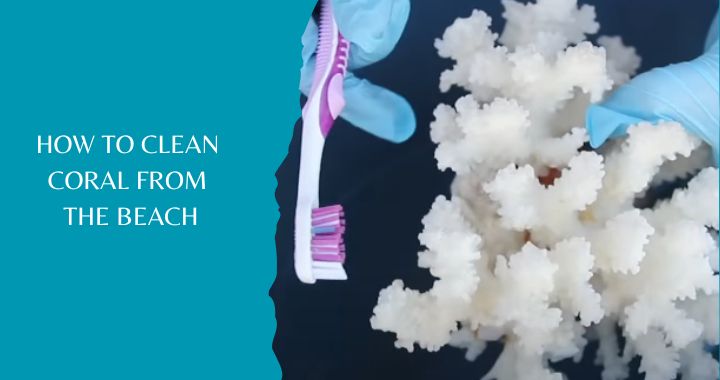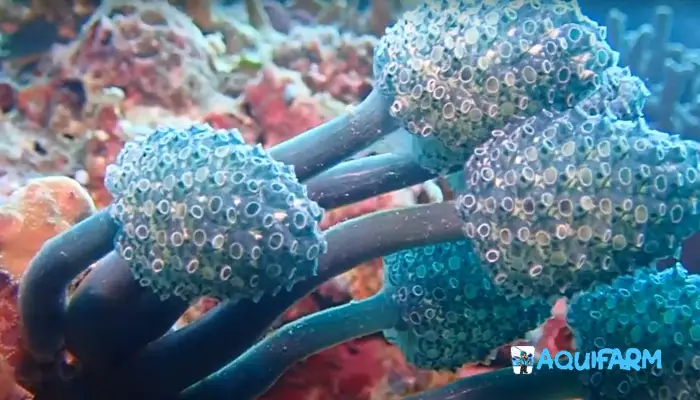
Corals are the hidden treasures that oceans are carrying with them for eras. Being an aquarist you might have been cherishing the idea of putting these beauties in your reef tank too. But it’s a bit tricky to set them in a setting away from the natural habitat. Most of the time corals die or intoxicate the aquarium with time.
Are you facing something similar? Let me tell you what you might have been neglecting so far, it’s the proper cleaning and maintenance of corals. Don’t worry, in today’s discussion, I’ll be focusing on how you can revive your corals with necessary cleaning techniques. So, let’s start without further ado.
Why is coral cleaning so important?

Before rolling into the procedures, let’s take a look at why you need to be concerned about cleaning your corals. Living soft corals need to be cleaned to have better adaptability in new environments. Some corals have hard exoskeletons to protect the polyps. In nature, these protective layers can accumulate multiple substances that may not resemble your tank’s water chemistry.
That’s why, if not cleaned properly, corals can be toxic to other aquarium creatures. Also to increase their longevity, it’s necessary to remove all the grims.
Cleaning Methods for Beach Corals

You need to handle the corals gently. Generally, there can be two types of such corals- hard and soft corals. The preservation of these two is different. So, at the first note, you need to identify the coral found on the beach. Now, let’s take a look at the methods suitable for both of these individually.
Cleaning the Hard Corals
Though they might look dead, hard corals can have living polyps inside them. These are mainly used for decorative purposes. Before putting them into the aquarium, a thorough wash is needed. Another most practiced cleaning process for such corals is the vinegar wash.
Let’s take a look at both of the methods step by step.
Cleaning with Water
Materials Required
- A bucket of saltwater or dechlorinated water
- Soft bristled cleaning brush
- Hand gloves
Cleaning Procedure
First of all, you need to take a close look to identify the area that needs special concern. You may spot some algae or ocean sediments on the surface. This is important as haphazard rubbing can damage the skeleton of the corals.
After detecting the zones, you need to dip the cleaning brush in some dechlorinated water saltwater. Then rub the corals gently in soft circular motion to get rid of any debris.
The next step is washing them thoroughly with saltwater or dechlorinated water. The unwanted substances on the coral surface should be removed. Repeat the same process if there is still some leftover.
Finally, air dry them properly before putting them in the tank. A friendly reminder here, always dispose of the water used for cleaning in the proper dumping zone. Do not throw the in drain directly as this can be harmful to the environment.
Cleaning with Vinegar Solution
Materials Required
- White Vinegar (Containing 5% acid)
- Distilled Water
- A 20 litre bucket
- A soft-bristled brush or a microfiber towel
Cleaning Procedure
In this method, first, you have to make a vinegar solution. A tested ratio for such a solution is 2 parts water and one part white vinegar.
Pour this solution into the bucket in such a way that one fourth of the bucket is filled. Your corals are supposed to be submerged in this solution. However, you can always increase the solution level inside the bucket in case of big corals.
Let the corals sit in this solution for one minute. Then you can take it off. If your corals have some living polyps inside, it’s better to pour the solution over them rather than dipping them into the solution.
After adding this solution, all the debris will come off easily with gentle rubbing. As it’s an acid wash method, you need to use a softer brush or microfiber cloth to rub off the excess.
Finally, wash the corals thoroughly and the air dries properly before putting them in the aquarium. Remember one thing here, do not wash your corals with high pressure water flow as these become a bit fragile after such acid wash. Instead of this, you can wash them inside a sink or with the help of a hose.
Cleaning Soft Corals
Soft corals are the living ones and these are quite delicate. So, you need to be a bit extra careful while cleaning them. Let’s take a look at how you can handle them.
Materials Required
- Wet paper towel
- Plastic zipper bag
- Distilled water
- A bucket or sink
- Any mild laundry detergent
Cleaning Procedure
After finding the soft corals you need to wrap them immediately with some wet towels. Then put them in plastic zipper bags and half lock the bags. Your corals will be safe till applying other steps on them. Try to choose fresh corals without any bad odor.
When you bring them home, wash them properly with distilled water to remove ocean debris. You may need to repeat this process several times. Then you can keep them soaking in water overnight to reduce the chance of shock due to changes in habitat.
In the morning, wash them repeatedly until the water is clean. After that, you can put them to dry in natural air for one or two days.
The final rinse will include a mild detergent wash. You can take a bucket of water (almost 15 liters) and add a teaspoon of that detergent to proceed. Wash your corals once in this mixture and then rinse thoroughly in distilled water. Put them in the open air for the last time to dry completely. Now you can happily place them in your reef tank.
Note: If you find some fishy wet smell coming from the corals, put some baking soda in water and wash them before the final drying.
The Popular ‘Bleach wash’
Some people may suggest you bleach wash for a brighter looking coral. But there have been so many controversies as bleach can damage the upper hardcore sometimes. Last time I used bleach on some of my hard corals and noticed some yellowish patches on the surface afterward. So, my search for how to clean coral without bleach ended up when I found the vinegar solution method as a good alternative.
I know, still, the query on how to clean coral with bleach is peeping into your mind. Well, in such a case, I can tell you about a safer ratio, ‘one part of bleach and three parts of water’, and follow the same procedure as the vinegar cleaning one. This is the most diluted version that works fine.
However, there’s always a risk of bleach toxicity inside aquariums if you put these corals with other marine creatures. So, you need to make sure that there’s no residue left after cleaning.
But, for soft corals, bleach wash is a big no for me. Last time some of my corals died due to bleach toxicity. So, I can’t suggest you use bleach on soft polyps.
Maintenance of the corals
After putting corals in the tank, keep a close eye on them. Time to time cleaning is important, especially in the case of hard corals. Their decayed exoskeleton can be hazardous to other organisms. So, if you are keeping one, monitor them regularly.
You can use diluted vinegar in your reef tank for maintaining corals. One important note here, always pick white vinegar having 5% acid content and not more than that. Dilute it to a 1:1 water and vinegar or 3:1 water and vinegar ratio. Never ever use cleaning vinegar in reef tanks.
To maintain corals and increase their lifetime keep a good balance in water parameters. You can check my article for better ideas. (how_to_maintain_corals_in_tanks.com)
FAQs
Is it safe to put corals in a freshwater tank?
Corals can be an amazing addition to decorating tanks. But, choosing hard corals for freshwater tanks is a bit tricky. As they increase the hardness level of water, many freshwater creatures can collapse to death. If you are looking for how to preserve dead corals, it’s suggested to put them in reef tanks or salt-water aquariums only.
Do corals break easily?
If you are keeping corals along with some fishes, their movement and high water flow can break your corals. Even some cleaning chemicals can reduce the longevity of the hard coral shells. So, you need to be careful so that the surroundings don’t put any pressure on corals for living.
Can dead corals be alive again?
Excessive heat can damage the corals in their habitat. With proper acclimation and supplements, you can revive the polyps of the corals again inside your reef tank. So, keep trying.
Conclusion
Finally, I’m at the end of the discussion. Here I have tried to bring up something new about coral cleaning with all the possible do’s and don’ts. With these easy processes and accessible materials, anyone can boost up the corals before putting them in reef tanks.
So, the next time you visit any beach, whenever your view is lush with those pretty corals, keep them safely with you. Your reef tank is going to be a comfy place for them to grow.
- Top 15 Freshwater Aquarium Plant Ideas for a Lush, Green Tank - November 9, 2024
- Top 13 Freshwater Aquarium Layout Ideas for a Beautifully Organized Tank - November 9, 2024
- 14 Stunning Rustic Freshwater Aquarium Ideas for a Tranquil Environment - November 9, 2024
